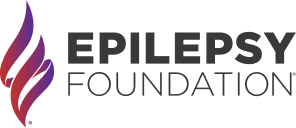Immunohistochemistry in Epilepsy Research
Epilepsy News From: Wednesday, March 23, 2016
Immunohistochemistry is a procedure where antibodies are used to visualize antigens (or proteins) in a tissue section like a brain slice. It can be very useful in everything from epilepsy research to detecting abnormal cancerous tissue. As a basic epilepsy researcher, I have used immunohistochemistry in the following way:
- An experimental animal (rat or mice) was humanely euthanized after making sure it feels no pain. This is very important, and there are organizations in place to make sure experimental animals are not subject to unnecessary pain.
- After fixation of the brain, slices are made on an instrument known as a vibratome.
- I was interested in a protein called GFAP (glial fibrillary acidic protein) in the hippocampus. This protein is present only in glial cells (as opposed to neurons).
- A process called gliosis may occur after seizures leading to an increase in GFAP expression.

The picture taken under a microscope shows glial cells that have GFAP protein (brown) in the hippocampus. (MOL, GCL, and H stand for molecular layer, granule cell layer, and the hilus, respectively, which are different parts of the hippocampus).
How does immunohistochemistry work?

Image adapted from Leinco technologies
- The protein (which in my case was GFAP) is expressed on the cell membrane. Through a very specific antigen-antibody, the primary antibody (shown in red) reaction attaches itself to the GFAP molecule.
- The secondary antibody (shown in blue) is numerous and attaches to every primary antibody molecule.
- The reason for having multiple antibodies (instead of just one) is to get amplification of a signal that would be too faint by itself. Amplification is achieved because multiple molecules of the secondary antibody bind to one primary antibody molecule.
- With these antigens in place, a colored reaction is achieved with the help of HRP (horseradish peroxidase) and DAB (diamino benzidine).
- This final, colored product can be visualized under a microscope.
In this way, immunohistochemistry is a very important technique in epilepsy and basic science research. I hope this article gives some understanding of how this technique is used in a laboratory setting.
Authored by
Sloka Iyengar PhD
Reviewed Date
Wednesday, March 23, 2016
